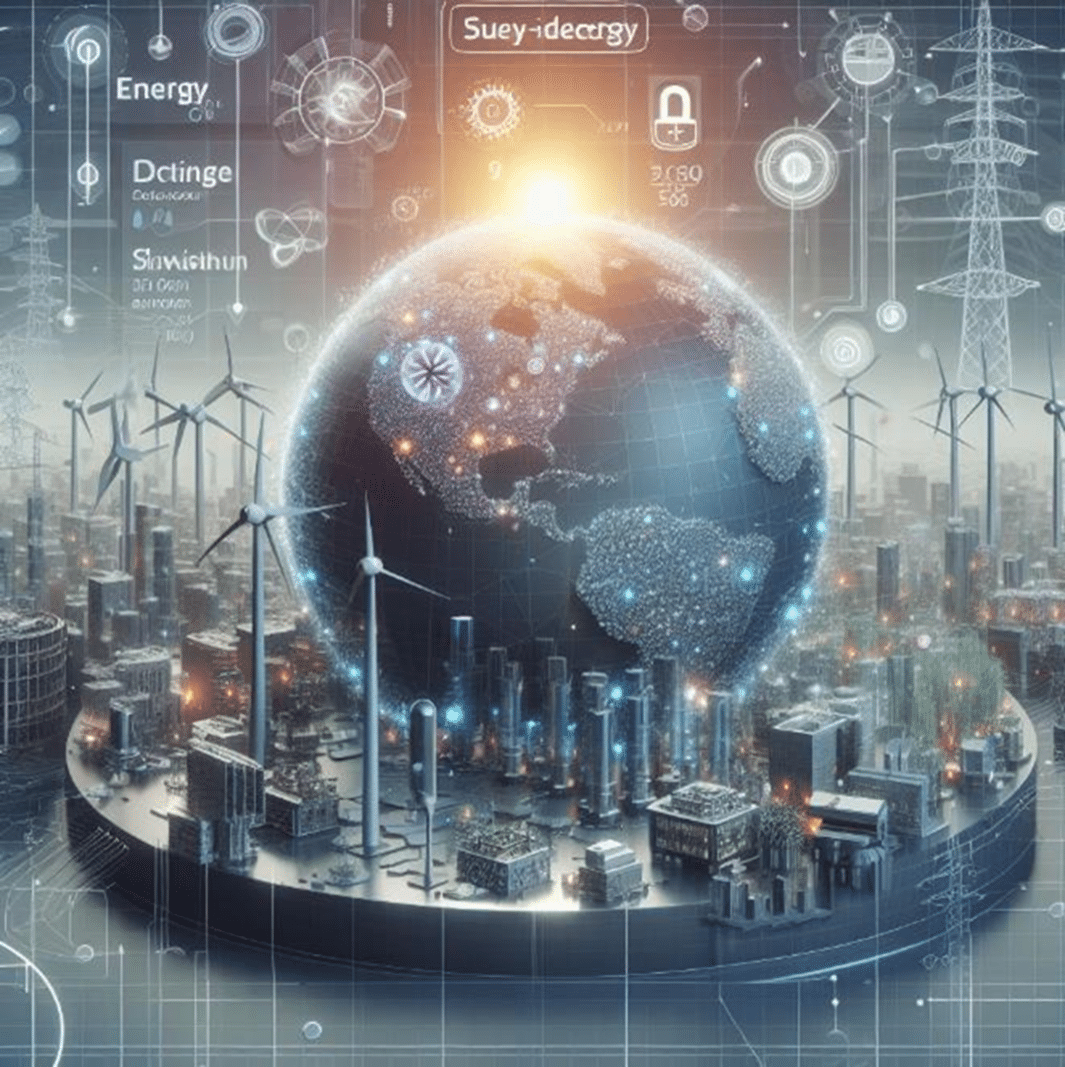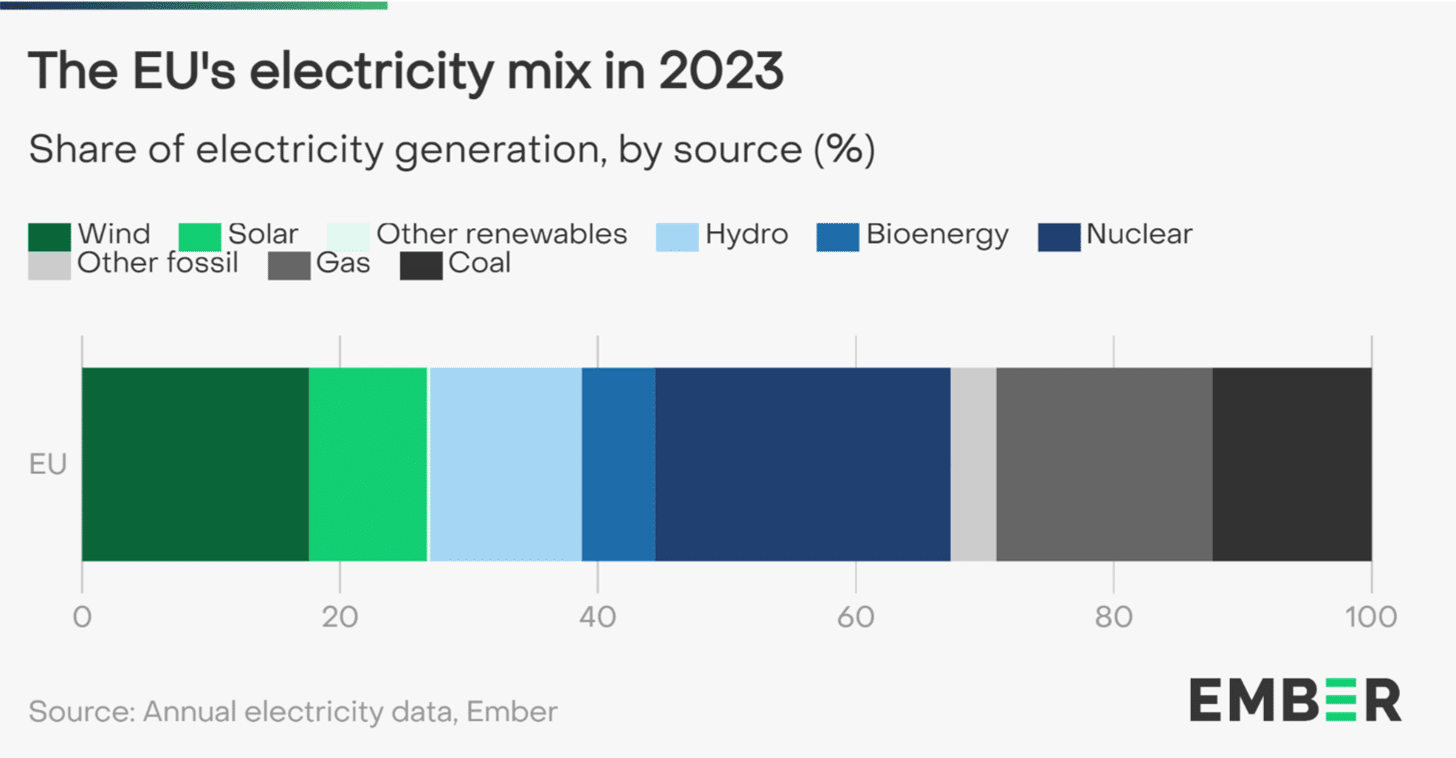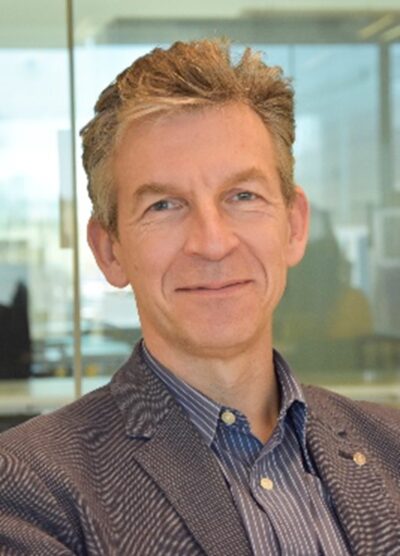Expert Talk: What will the energy system of the future look like?
As the sun sets and the winds ease, our need for electricity remains unchanged. How can we harness renewable sources optimally to ensure stability in our electricity supply – amidst such variability? Professor Geert Deconinck, expert at EnergyVille, KU Leuven, and KIES, offers insights into the future of our energy infrastructure, emphasizing the roles of decentralization, data-driven management, and sustainability.
Toward a Fossil-Free Europe
Meeting the commitment of the 2015 Paris Agreement to limit temperature rise to less than 2 degrees by century’s end faces challenges. A recent IPCC report warns of a potential 4°C temperature rise without changes in greenhouse gas emissions. This underscores the global energy challenge: how do we swiftly ‘defossilize’ to meet critical climate goals?
The EU’s ambitions for 2030 and 2050 are bolstered through initiatives like the Green Deal and “Fit-for-55” program, aiming for complete climate neutrality by 2050. Belgium, alongside other member states, confronts sustainability goals: reducing emissions, boosting renewables, and enhancing energy efficiency. The necessity of these goals is clear, the technology available, and the costs of inaction far outweigh the investments for a sustainable energy future.
The Three D's of Change: Defossilization, Decentralization, and Digitalization
To achieve these goals, we must redefine energy production and usage. Deconinck emphasizes a paradigm shift: “Decentralized, Data-driven Defossilization is our path to a climate-neutral society.” Let’s delve into what these pillars entail.

The key to 'Defossilization' is Electric and Renewable
A pivotal element in achieving climate neutrality is ‘defossilization’ – reducing our dependence on fossil fuels to mitigate CO2 emissions. This necessitates a substantial shift towards electricity as the primary energy carrier across our infrastructure, transport systems, and industrial processes. This transition is already underway, resulting in reduced greenhouse gas emissions and more efficient energy utilization. Heat pumps and electric vehicles, for instance, typically demonstrate significantly lower energy requirements compared to their fossil-fueled counterparts.
However, this electricity must originate from renewable sources, ensuring it is truly ‘green.’ Europe aims to achieve full green electricity production by 2040, propelled by the precipitous decline in the cost of solar and wind energy. In 2023, clean energy accounted for over two-thirds of EU electricity production, doubling that of fossil fuel generation. Yet, these figures remain much lower for heating and transportation. As electrification continues to expand through the adoption of heat pumps and electric vehicles, renewable sources must keep pace to meet the required emission reductions.
Europe recently committed in Ostend to transform the North Sea into the world’s largest green energy hub. Thanks to the North Sea’s strong, consistent winds, significant amounts of sustainable energy can be harnessed. Such initiatives are crucial for realizing the EU’s ambitions, including the target of sourcing 55% of all energy vectors from renewables by 2030, doubling the figure from 2023. Moreover, by transcending national boundaries to establish an optimized transmission and distribution network, centrally generated green electricity can be delivered to end-users at minimal cost.

A Decentralized Energy Landscape: Empowering Energy Communities
In addition to altering what and how we consume electricity, there’s a fundamental shift in where it’s generated. Historically, large, centralized power plants formed the backbone of our energy infrastructure, currently strengthened by even larger scale European initiatives. Furthermore, we now witness wind turbines lining highways and solar panels adorning unused rooftops. Such grassroots initiatives are driving a parallel transition toward decentralized energy systems at the municipal, neighborhood, or even household level.
Control is also shifting toward decentralization. For instance, you can already choose to run your washing machine primarily when your solar panels are producing energy or store excess energy in a household battery. Collective investments and concepts like ‘energy sharing,’ where households share their generated electricity, contribute to this decentralized model. By engaging consumers as active participants rather than passive recipients, they can benefit from dynamic pricing in the energy market.
Moreover, businesses can collaborate with households or other end-users, creating ‘energy communities.’ These communities, which are already emerging, become increasingly pivotal. As we shift toward locally sourced energy, with surplus electricity redistributed across the grid automatically, bidirectional energy flows necessitate localized control and safeguards. The benefits are substantial: reduced transmission losses, enhanced resilience against disruptions, and increased community involvement in energy provision. In essence, it fosters more efficient utilization of renewable energy sources, further diminishing our reliance on fossil fuels.

Digitalization in Energy: Harnessing Data for Sustainability
With the decreasing costs of ICT-equipment, digitalization permeates every aspect of our lives, including the energy sector. This translates into improved planning, optimization of renewable energy consumption, and accurate predictions of grid issues and energy market prices.
Data plays a pivotal role in this digitized ecosystem. Daily electricity consumption data, collected via digital meters, not only facilitates billing but also provides invaluable insights for grid operators to identify and resolve issues promptly. Additionally, coupling this data with meteorological information, market prices, and user behavior enables informed decision-making.
Artificial intelligence enables the utilization of this vast data pool to uncover trends and enhance the efficiency, sustainability, and affordability of transmission and distribution networks. This is the focal point of Geert Deconinck’s research group within EnergyVille. Applications range from coordinating electric vehicle charging to energy sharing or trading between communities. The proximity of the Open Thor Living Lab provides a real-world testing ground for these strategies before market introduction.
Expanding ICT infrastructure is pivotal for further advancing a decentralized energy market. However, integrating systems from various providers remains a significant challenge. Hence, the European Commission has launched an EU action plan focusing on open data flows, smart grids, consumer participation, and cybersecurity.
Such initiatives empower consumers to select optimal energy tariffs and enable climate-conscious citizens to visualize the CO2 intensity of electricity production. However, alongside reaping the benefits, attention must be paid to privacy concerns and cybersecurity risks. European directives like the GDPR and the NIS2 directive play a crucial role in addressing these challenges.

Flexibility in Focus
In addition to concrete initiatives within the 3D framework, effectively managing the disparity between supply and demand is paramount to prevent power outages. Flexibility in transitioning to this new energy paradigm is essential. As Deconinck suggests, “Imagine if we could flexibly adjust energy demand to match electricity generation, rather than the other way around – as is currently the case. Flexibility then acts as a buffer, enabling the system to adapt to unexpected fluctuations in supply and demand.”
This flexibility is indispensable to ensure the reliability and stability of the energy grid. While large-scale flexibility may be required for only a few hours annually, smaller-scale flexibility can be deployed daily through market mechanisms. Elia, the transmission system operator, anticipates a 30% increase in electricity consumption in Belgium over the coming decade, mainly due to industrial, heating, and transportation electrification. Leveraging 1 to 2 GW of flexible capacity, if properly managed, can obviate the need for new electricity generation units.
What does this look like in practice? The thermal mass of buildings, for instance, can store and release heat, allowing heating or cooling systems to be temporarily deactivated without noticeable consequences. Electric vehicles, projected to reach around 40 million in Europe by 2030, often remain parked for extended periods, requiring minimal immediate charging. This fleet of batteries could offer considerable flexibility to the grid. On a larger scale, businesses can engage in energy trading and flexible consumption, bolstering energy network stability.
Despite the promising scientific groundwork for this new approach, challenges persist, particularly in the practical implementation of flexibility measures. Accurate data and comprehensive knowledge are essential to predict and manage energy supply and demand. ‘Energy yield’ modeling remains a continuous research endeavor at EnergyVille. Based on these forecasts, strategies can be formulated to swiftly respond to dynamic conditions, such as solar output fluctuations, thus reducing the need for reserve capacity and averting peak demand.
The gradual deployment of digital meters and the limited availability of dynamic energy tariffs are identified by Deconinck as impediments. Digital meters not only facilitate accurate energy billing but also offer grid operators insights into energy requirements critical for grid optimization.
“Innovations are imperative to surmount these hurdles,” emphasizes Deconinck. “Developing advanced control techniques and tariff structures that incentivize flexibility are integral to the scientific agenda.” Distribution system operators in the Netherlands and Flanders are already actively engaged in promoting flexibility measures and enforcing grid constraints. The introduction of capacity tariffs, as implemented in Flanders since 2023, lays the groundwork for individual users to exploit flexibility and optimize their electricity expenditure.

A Collective Endeavor
In addition to the technical intricacies of the energy transition, Deconinck’s aspirations represent a multidisciplinary challenge. “Every level of government must endorse this vision and take actions to steer the economy and society towards climate neutrality.” He underscores the significance of raising awareness, fostering a shift in mindset, and ultimately effecting behavioral change. Until recently, the average consumer was largely unaware of their energy consumption habits. The costs of inaction will be substantial, and every fraction of a degree less warming will save lives. “Instead of viewing the energy transition as an insurmountable expense, we must regard it as an investment in the future. The dividends will far outweigh the necessary investments,” concludes Deconinck optimistically.
About the Author
Geert Deconinck is an engineer and professor of smart energy networks at KU Leuven (ELECTA) and associated with the research collaboration EnergyVille.

Want to learn more?
This article is based on the chapter ‘3D energy supply for the next decade. Decentralized data-driven defossilization’ of the KU Leuven course text in Lessons for the 21st Century 2023 – 2024. These classes are free to follow after registration, on Monday evenings via livestream or in the Pieter de Somer Aula. The recording of Professor Geert Deconinck’s lecture is available online.